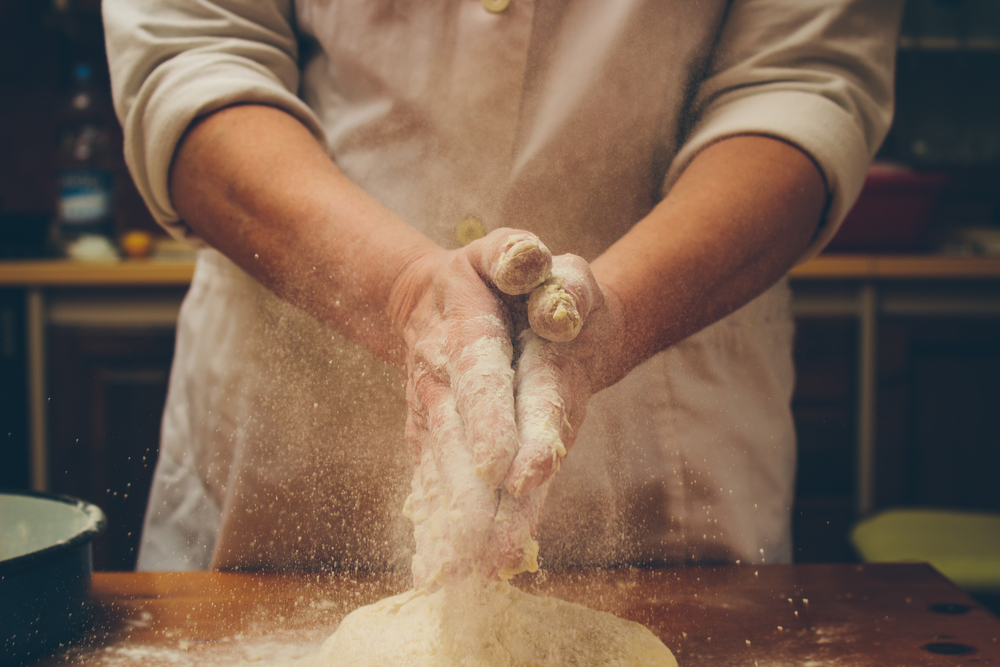
Many people would agree that the smell and taste of freshly baked bread is one of the most satisfying in the world. Our olfactory sense and taste buds are fans of thousands of scents and tastes, but bread seems to be a commonly agreed upon favorite. It’s the food of fellowship, hence the phrase, “break bread together”, meaning, “Let’s share conversation and food”.
Bread has been a basic staple from the time the first batch was made about 30,000 years ago. It has an intriguing history; studies indicate that prehistoric people were already making a rudimentary kind of bread that may have derived from cattails, ferns and water. Evidence reveals that prehistoric people used a sort of mortar and pestle to grind the ingredients into a flour, add water to make a gruel, and then cook it on hot rocks.
Agriculture and developed societies eventually yielded a more prodigious variety of grains, but the breads that were derived from them were flat in the beginning. This was because the leavening agent, yeast, wasn’t brought into the fold until the days of Ancient Egypt, around 300 B.C.
Even with the airy lightness that yeast brought to breads, the original milling process still left them much coarser than the velvety stuff we are capable of producing today. The Mesopotamians in 800 B.C. brought the refining process closer to what we know today than what earlier people had known. They stacked two flat, circular stones on top of each other and with a mechanical system used the power of draft animals or slaves keep the stones turning. The grains would become fine flour, suitable for making prized bread.
Breads have evolved into just about every type imaginable. Basic bread is the most versatile food on the planet, as it is open to wonderful combinations of ingredients. Through time, many types of breads have been presented from the ovens of master bakers. Four basic breads are on many restaurant menus, including white, wheat, rye and sourdough, and there are many variations on each of them. Well-stock bakeries carry all sorts of pastries, bagels, doughnuts, various artisan loaves, egg breads, flat breads, sweet breads, quick breads and the list goes on.
Every country has a type of bread indigenous to their basic menu of common foods; a culture’s preferred type of bread is as integral to their way of life as their preferred language! The bread a culture eats can be an indicator of that culture’s history. A good example of this is the Vietnamese version of baguette called, Báhn Mì, which has rice flour added to the wheat. This isn’t so surprising since the French, known for baguette, first occupied Vietnam in 1884 and inlaid the French Indochina culture through the 1950’s.
Bread is such a beloved part of our diet that even the low carb craze had to get a bite. The first “low carb” breads were shot down by nutritional sleuths who discovered that the breads actually had more carbs than regular bread! Since then, alternative breads such as low carb and gluten free breads have become a sweetheart to grocer’s bakeries and restaurants to serve individuals requiring a low-glycemic diet and those with gluten sensitivities.
Individuals who otherwise wouldn’t have bread for medical reasons have demanded alternatives to mimic this beloved food as closely as possible and master bakers have sometimes hit the mark. Anyone who has tried to make a successful low carb or gluten free bread recipe knows the special care it takes to get the taste and texture to your satisfaction. Bread is the basic ingredient of many of our most loved recipes, and the great variety of bread products attests to our passion for this ancient food staple.

